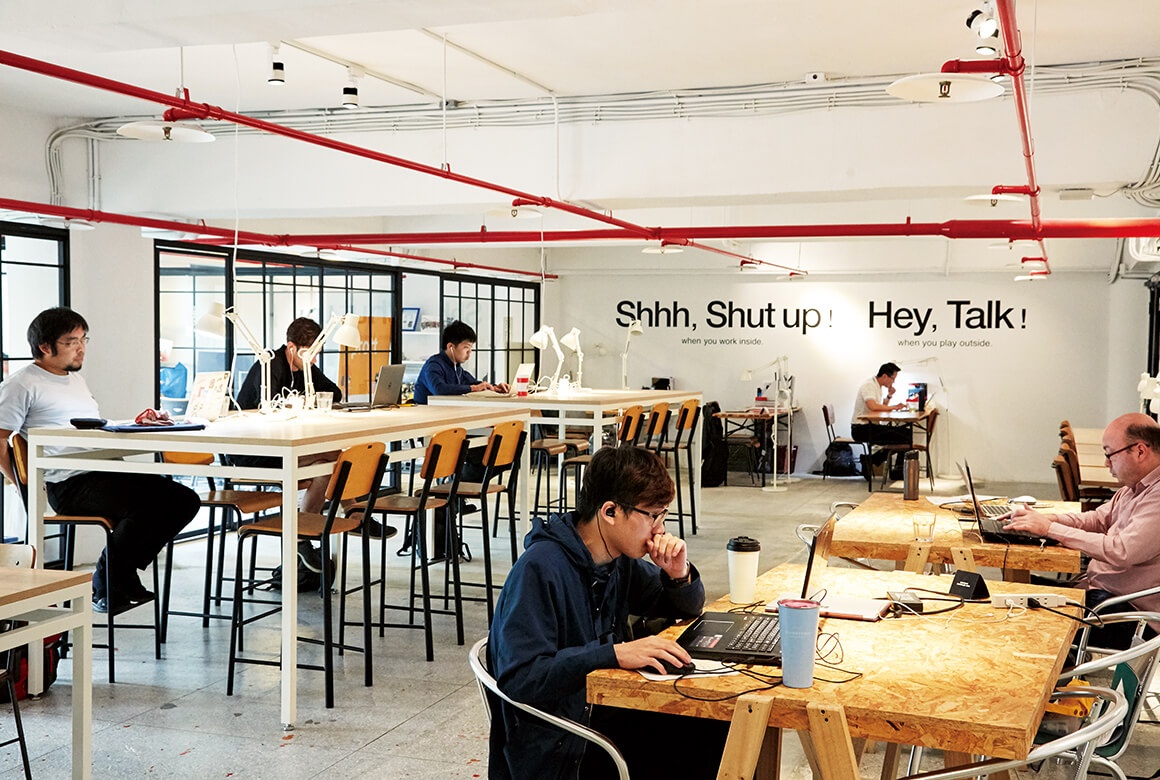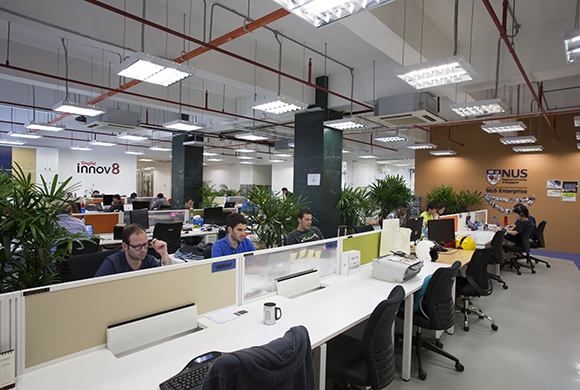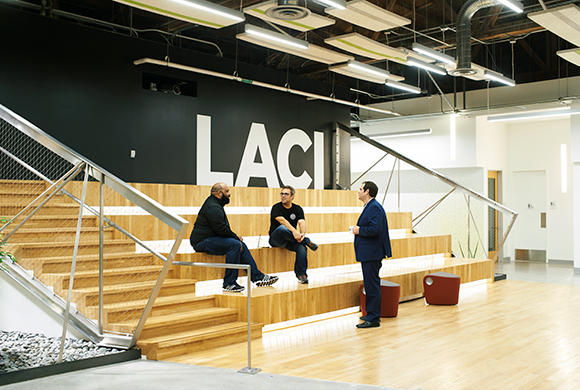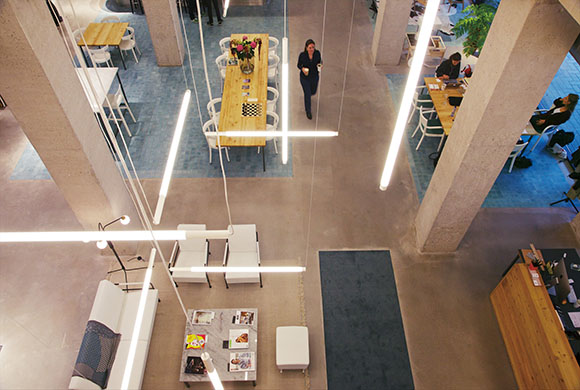Workplace
Dec. 7, 2020
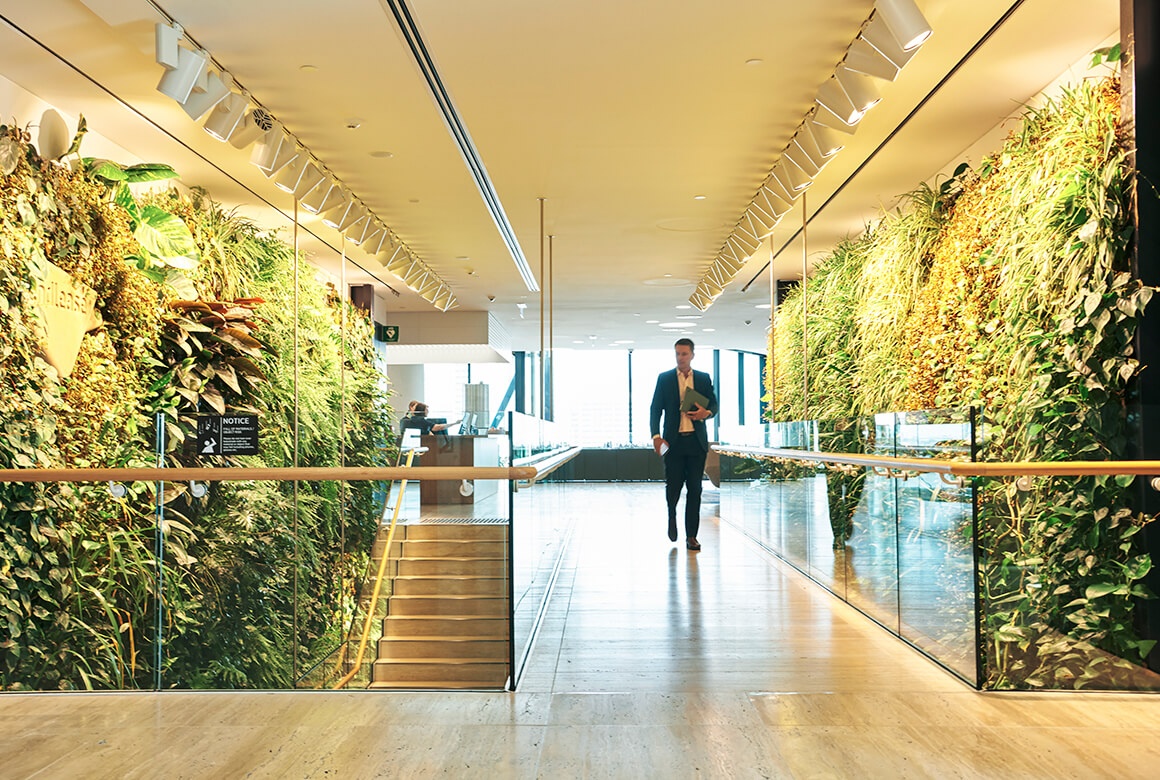
Leading the World of the Workplace for Well-being
With an Emphasis on Behavioural Design
[Lendlease] Sydney, Australia
It has been four years since Lendlease, a leading Australian developer with global operations, moved its 2,000 workers into consolidated global headquarters in July 2016. An internal survey, done one year after the move, showed that 92% of their workforce felt “proud to show the building to visitors,” 88% thought their corporate culture “supported flexible work culture,” and 73% found their workplace productive. In other words, the move has been a success, receiving overwhelmingly positive reactions.
The new office is located in Barangaroo South, a redevelopment site in the north west section of the Sydney Central Business District that Lendlease helped bring to fruition. The building Lendlease occupies 11 floors of has received a 6 star rating by the Green Star system and scored Platinum Certification in the WELL Building Standard. The building’s indoor air quality is enhanced by using a chilled beam single pass fresh air mechanical system combined with more than 10,000 plants and low level of volatile organic compounds which all promote indoor air quality. After all, this is Lendlease, a leading voice in the future of workspace, known for its emphasis on well-being in developing office buildings.
What makes their design distinctive is their approach to well-being based on positive psychology. “The institutions where we spend our time influence our health. If you spend time in an environment that has an abundance of fruit and fibre rich snacks versus snacks that are high in sugar then you are more likely to reach for a healthy snack when you are hungry. If you work in a building and there is a staircase next to a lift, you are more likely to take the stairs. So the building can influence your health and we use psychology (or behavioural design) to bring that to life,” said Duncan Young, Head of Workplace Health & Wellbeing.
The building is designed to encourage social connection. “Knowledge is spread by person to person, not by emails.” The office, with its design based on an agile working style, does not allocate desks to workers. By installing a range of workplace settings including standing desks, Lendlease succeeded in reducing the time employees were sedentary by 45 minutes per day which is scientifically significant and the results published in medical journals.
As a company, Lendlease takes what workers eat seriously. They encourage employees to eat lunch away from their desks. While they do not regulate what people eat, they promote healthy eating. Young said, “On each working floor, there’s yogurt, fruits, healthy nuts and seeds. It is designed with health in mind. We have carbonated water on every floor, in an effort to encourage people to drink more water.” By introducing healthy snacks and removing sugary drinks and sweets, they reduced sugar consumption by 1,100 kilograms in a year.
These programs are constantly adjusted after data collection. Lendlease has analyzed more than 2000 days worth of data on how people sit, stand and sleep, collected using medical grade accelerometers on volunteers’ thighs. Annual health check-ups are offered to employees where they analyze workers’ blood and blood pressure, and conduct surveys on lifestyle habits, all of which is used to better the existing programs for the following year. In addition, the company provides flu shots and skin cancer testing administered by doctors, reducing the needs for hospital visits.

Duncan Young
Head of Workplace
Health & Wellbeing
Lendlease
Asked about the ever increasing attention on well-being, Young explained, “The fourth largest killer of people globally is inactivity. We want our people to move more. We encourage people to engage in active transport to work, meaning ride, run or walk to work.” To walk the walk, Lendlease equipped itself with what they call the “end-of-trip” facility to support more active commuting. The Barangaroo precinct has parking space for 1100 bikes, shower rooms and towels. This has helped to increase the number of workers commuting by bike or going out for a jog during the lunch break.
Young also pointed out, “Good health and well-being allows you to navigate highs and lows of everyday life. If you are healthy, you are more able navigate the highs and lows of everyday life – both in your personal life and your life of work. Good health is not just physical health, it is also emotional health. It is about mindset. ” It has been shown those with a growth mindset are more likely to succeed than those with a fixed mindset, he added.
Young bases this thinking on motivation theory. “What it says is (what motivates people are) purpose, mastery, and autonomy. For example, flexibility is quite important. We want people to do great work so we set goals for them, but we allow them to do it in their own way. We know from data collected using heart rate variability monitors suggest that when people are able to choose where they do their best work, for example home, they self-report greater productivity whilst showing lower stress.
Young understands well-being is not something that can be imposed on workers. “We have three ways of approaching well-being. First, we talk about awareness, which is teaching people about what well-being means and how it can help. We have curiosity, which means, if I give you actual results, you are more likely to pay attention. Then we coach you by saying, if you think about your day, what is one small thing you could do today to improve your well-being? We ask people this question, what works well.”
There is a perception gap between generations on well-being, he concludes. Younger people tend to be more clear about what they look for in work. They tend to want more engagement at work, looking to increase the balance between work and life, and searching for healthier ways of living. “Good business means being clear about your objective and allowing your people to do their best work in the best way” he said.
The key in allowing people to do their best work is to help them recover from stress. “There is a lot of talk on stress and burning out. But the reality is we are not getting enough recovery. If you have stress and it is balanced by recovery, that is OK. But if you have stress and no recovery, that leads to chronic stress. There will be more emphasis on the quality of sleep in the future,” Young predicted. Currently, Lendlease provides its workers with sleep coaching, taken from a method used by top athletes. Young, who thinks of workers as “corporate athletes,” looks to expand these supporting methods. In addition, employees are allowed to take three days a year as “wellness leave” where you can do whatever you choose to look after your health. Young said, “We now run mental health first aid, sleep clinics, education around nutrition and will keep on building on these programs so that we have a growth mindset and positive psychology so that you become more sophisticated in your approach to well-being over time.”
—————————————————————————
Additional six questions regarding before/post COVID-19 work environments
Q1: Can you tell us about current office attendance? What is the percentage of workers that come to the office, and how often do they come?
Lendlease’s employees work in a range of workplace settings, which reflects the broad nature of our business. The majority of our 1,800 employees based in Barangaroo are currently working remotely during COVID-19, but there are exceptions for people to attend the office if they are unable to work from home.
Q2: What is your telework/work-from-home policy? For which positions/departments does it apply? How do you manage tracking work attendance?
Our employees are largely knowledge workers and continue to do the same work. The only real difference is how we meet and connect and this is largely facilitated through Microsoft Teams.
Q3: In your eyes, how smooth was the transition to telework? How much preparation was in place prior to the pandemic?
Our employees are equipped to work anywhere, with the majority of us having laptops and mobiles phones, as well as server connections. Initially there were some teething issues with home working setup, but the majority of people have been able to quickly adapt and continue to work as usual (remotely).
Q4: Have there been any interesting findings since the transition?
Many of our employees have experienced remote work but with COVID-19 this has been for an extended period. Personally I have observed that the social cues that guide many of our work habits are not present, making it easy to forget to move during the day. We also tend to work longer hours, as there is no defined start and finish, which is generally bookended by commuting. However there are lots of upsides, with great opportunities to pursue wellbeing such as homemade nutritious meals, daily exercise or more time for sleep.
Q5: What are the challenges faced in enforcing and adopting telework?
Much of our work is done collaboratively which is easier face to face but it’s also possible to create meaningful connection remotely – this needs everyone to join in and focus on building our connections virtually.
Q6: After the pandemic, do you plan to go back to conventional work arrangements? Or do you plan on keeping telework?
It is likely that all forward thinking organisations will have a blended work style, allowing people to do their best work whether at the office, home or a third space. This trend is likely to accelerate in the future.
photo: Hirotaka Hashimoto
Web exclusive
The visit was done in October 2019 in Sydney
Additional Question in July 2020

















